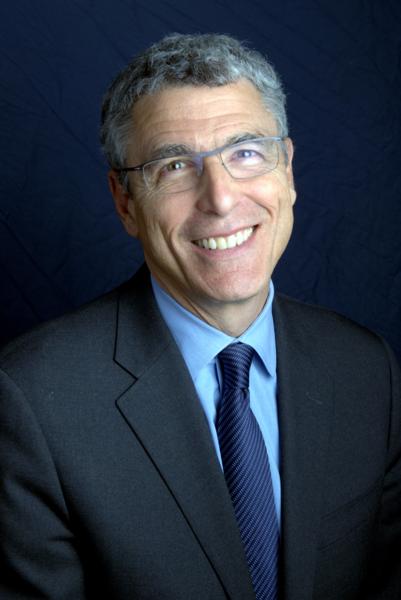Parashat Tizaveh goes into the elaborate sacred garments worn by kohanim, the priestly class. Ritual and sacred garb in faith communities - Jewish as well as other faiths - can be a source of identity and inspiration, as well as a link to our shared past. But sometimes, the rules and restrictions of religious garb can clash with expectations and experiences in modern life. Rabbi Rick Jacobs asks us to consider: what is it we wear that expresses who we are?
Three ways to listen:
- Listen to the full podcast below
- Subscribe to the podcast on Apple Podcasts
- Suscribe to the RSS feed
Transcript
[URJ Intro:] Welcome back to On the Other Hand: Ten Minutes of Torah, a podcast presented by ReformJudaism.org. Each week, Rabbi Rick Jacobs, the President of the Union for Reform Judaism, shares a new spin on the Torah portion in just about 10 minutes or less. This week, Rabbi Jacobs teaches about Parashah Titzaveh. And he wonders, what do you wear that inspires you to remember who you are?
[Rabbi Rick Jacobs:] This week we focus our attention on Parashat Tizaveh from the book Exodus. Last week, we were given the instructions for creating the first praying place. In this week's parashah, we get the instructions for the garments that the ancient priests were to wear. And they were elaborate! They weren't just a little something over here to distinguish, it was a whole very elaborate set of sacred garments, from a very special hat, to a robe, and to sacred jewelry that was worn on it - again for very, very important meaning. And it just awakens that not only in Jewish life but in religious life, there's a whole lot of, I would call, ritual garb that you can oftentimes see. And a lot of it goes back, in the Western faith traditions, to this parashah, Parashat Titzaveh. We're told, you know how, to make them what colors, what materials, and kind of how to bring it all together, and for what purpose.
So I'd like to just reflect if we could today on sacred garb that we wear, but also that other faith communities in our larger society also wear, and what some of the rules and some of the restrictions, and frankly, some of the challenges [are] of wearing those garments. So can I start with a little bit of a shout out to the U.S. military? Which for a good long while, did not have provisions for those faith traditions that required not only special headgear, but also beards and letting one's hair grow long. So the Sikh community, a beautiful, very old and venerated tradition, requires that their adherents wear distinctive headgear -- particularly the men. And the U.S. Army has now made space for women to wear hijabs, and Sikh observant people to wear a turban, for religious beards to be allowed. And frankly, you know, what comes with that are obviously kippot and all the things that would allow observant -- in traditional ways -- Jewish people to be who they are in the U.S. military. And we'd love to see that beautiful diversity which is America reflected obviously in our armed services, and we'd like to also see something that's developing that diversity in our elected officials.
I had the opportunity, a few weeks ago to be at the U.S. Congress for the swearing in of the newest members of Congress. By the way, just if you're keeping track, 102 women [in Congress], [it's] really exciting to meet some of the new and very, very talented and very idealistic and passionate leaders who will be stepping in, and now are officially already on board in their role in the House of Representatives or in the Senate. You also may know that there's a little bit more religious diversity among the new class of freshmen legislators. And it also became apparent, because particularly of one new member of the Congress from Minnesota, member Ilhan Omar, who is an observant Muslim woman, and she wears a hijab. You know what hijab is, you've seen [it], it's a kind of a scarf worn by Muslim observant women. And to that point, I have to point out which may be a little bit of a history lesson to you as it was for me, that in 1837, hats of any kind were banned from the House floor. And that rule has, by and large, existed for close to two centuries -- 181 years, to be exact. And what had to happen from Democratic leader Nancy Pelosi and the incoming Rules Chairman, Jim McGovern, is they actually had to make a change in the rules for how you could show up in the U.S. Congress. It is now permitted for a Muslim to wear her hijab. It's therefore also permitted for the first openly Orthodox Jewish person -- who has yet to arrive at the U.S. Congress -- but he or she will also be able to wear a kippah. And we think of the other faiths traditions - a Sikh legislator will also be able to wear their turban. And I think this is a tremendous advancement. It suggests that, frankly, sacred garb doesn't come in just one flavor. There are lots of ways that our community can be strengthened, and we're not, you know, a country of one faith. We're a country of many faiths, and we hold that as a strength, and not a weakness.
I want to also reflect [how] very often, you know, over my years as a congregational rabbi, years that I just loved. I love my new role -- it's not so new, but I love this role at the URJ -- but I remember almost every wedding that I did. And over the years [there were] a whole lot of them. What a blessing to stand under the chuppah with couples. I remember as we were preparing for everyone's upcoming wedding, they'd say, "Rabbi, do I have to wear a veil?" The brides would ask me, "Is there a rule about that?" And I'd say "Well, you know, there are rules, customs, that are pretty ingrained, but for me, in the Reform community, I'd rather describe what the meaning is, and you can decide whether it's something that you want." And so when you point out that the wearing of veils is pretty much across a lot of faith traditions as a symbol of modesty and of a woman being set aside, set apart, you see that it echoes with some of the customs about women wearing hijabs, and covering their hair, and modesty, and being set apart. And sometimes that is the absolute key to having a bride say "So you know what, I think I'm going to pass on the veil. That's not how I see my role as bride and his wife." And other times they say "You know, I've got this beautiful veil from my great-great-grandmother. I'm not crazy about the idea of what veils stand for, but I love this connection to my matriarchal past.".
So, you know, we have veils that are now part of lots of different faith traditions. And sometimes we modern Jews, we think that somehow we're, you know, we're in some completely new place. I just have to reflect that as a Reform movement, there was a time, particularly in the late 19th and early 20th century, that to be a Reform rabbi, to be a Reform Jew, was to wear fewer ritual garments. That was one of the ways we showed that we were modern, that we were liberated, enlightened. You know, we don't dress like the traditional Jews, we don't wear all those garbs. And the truth is, that's a limiting assumption, that, you know, to wear those sacred ritual garments, that that is only a link to past and more traditional ways of practicing. So actually, I know there are some synagogues that still have rules that keep rabbis from wearing kippot, that say that's not who we are. But I'd say, many of our creations have evolved and have allowed people to wear or not wear as they see fit, which I think is a beautiful expression of Jewish life.
I want to end with, you know, arguably, one of the most beautiful little verses in Parashah Titzaveh. It's from Chapter 28; verse 29, and it says Aaron, the first Aaron, the brother of Moses and Miriam, who was the first High Priest --[it] says "Aaron shall carry the names of the sons of Israel on the breast-piece of decision over his heart when he enters the Sanctuary for remembrance before the Eternal at all times." So here's a beautiful thing that says that Aaron didn't just wear this this breast-piece over his body. It had a very powerful message, and the message for the ancient Aaron was that each of the gems reminded him of the Tribes of Israel and the People of Israel, so when he entered the Sanctuary, he carried them over his heart. Well, I know that our Reform Jewish community is still remembering with such love and affection Rabbi Aaron Pankin, of blessed memory, who was one of our most inspired teachers and leaders. He was president of the Hebrew Union College Jewish Institute of Religion. He was a Talmudic scholar. And he was like the first Aaron -- somebody who carried all of us with him wherever he went, which meant that his leadership was both impactful and uplifting and inspiring. So, when we're thinking of sacred garments and the sacred objects that the ancient priests wore, let's also remember some of the modern-day ways that ritual garments can enhance and add more meaning to our lives. Aaron Pankin certainly did that in his all-too-short life. All of us can find what we choose to wear, what we choose to identify with, and may the garb that we wear bring more meaning, and more purpose, and more depths to their religious lives that we lead.
[URJ Outro:] Thanks for joining us for this week's episode of "On the Other Hand: Ten Minutes of Torah." If you liked what you heard today, and we hope you did, you can find new episodes each week at ReformJudaism.org and on Apple Podcasts, where we would love for you to rate and review us. And you can visit ReformJudaism.org to learn more about all aspects of Judaism, including rituals, culture, holidays, and more. On the o=Other Hand: Ten Minutes of Torah is a project of the Union for Reform Judaism, a leading voice in the discussion of modern Jewish life.
Until next week -- l'hitraot!


 Apple
Apple Android
Android Stitcher
Stitcher